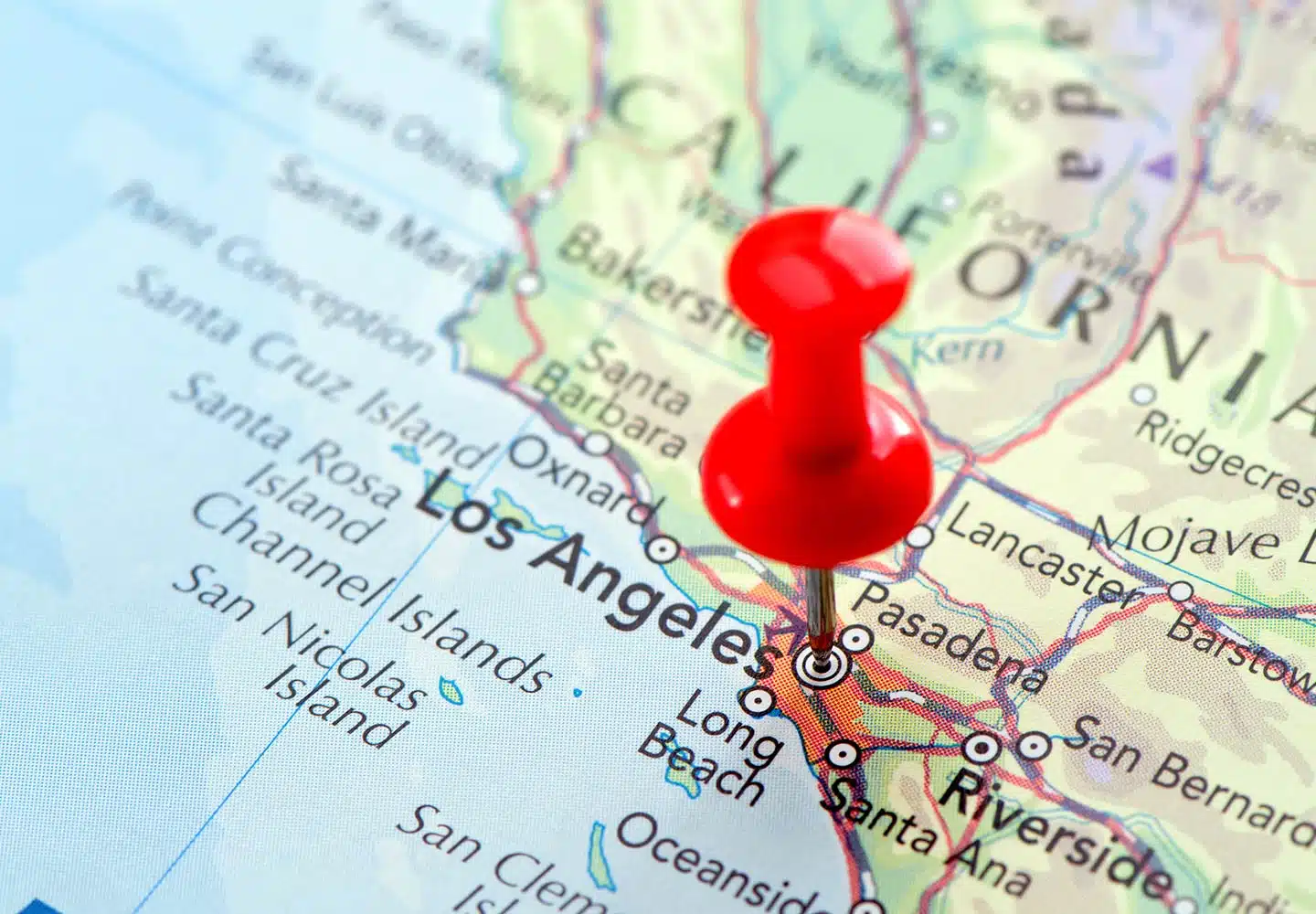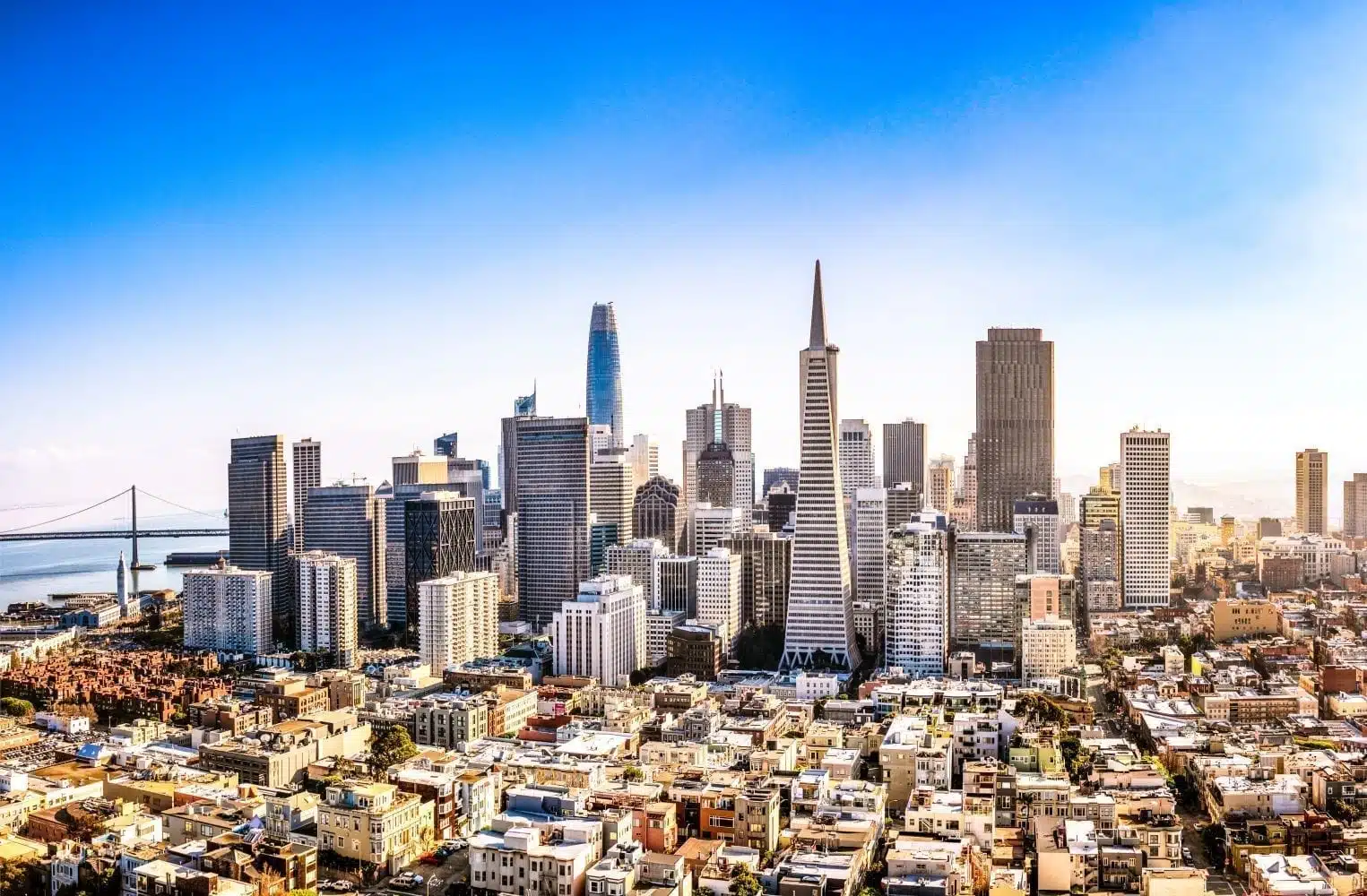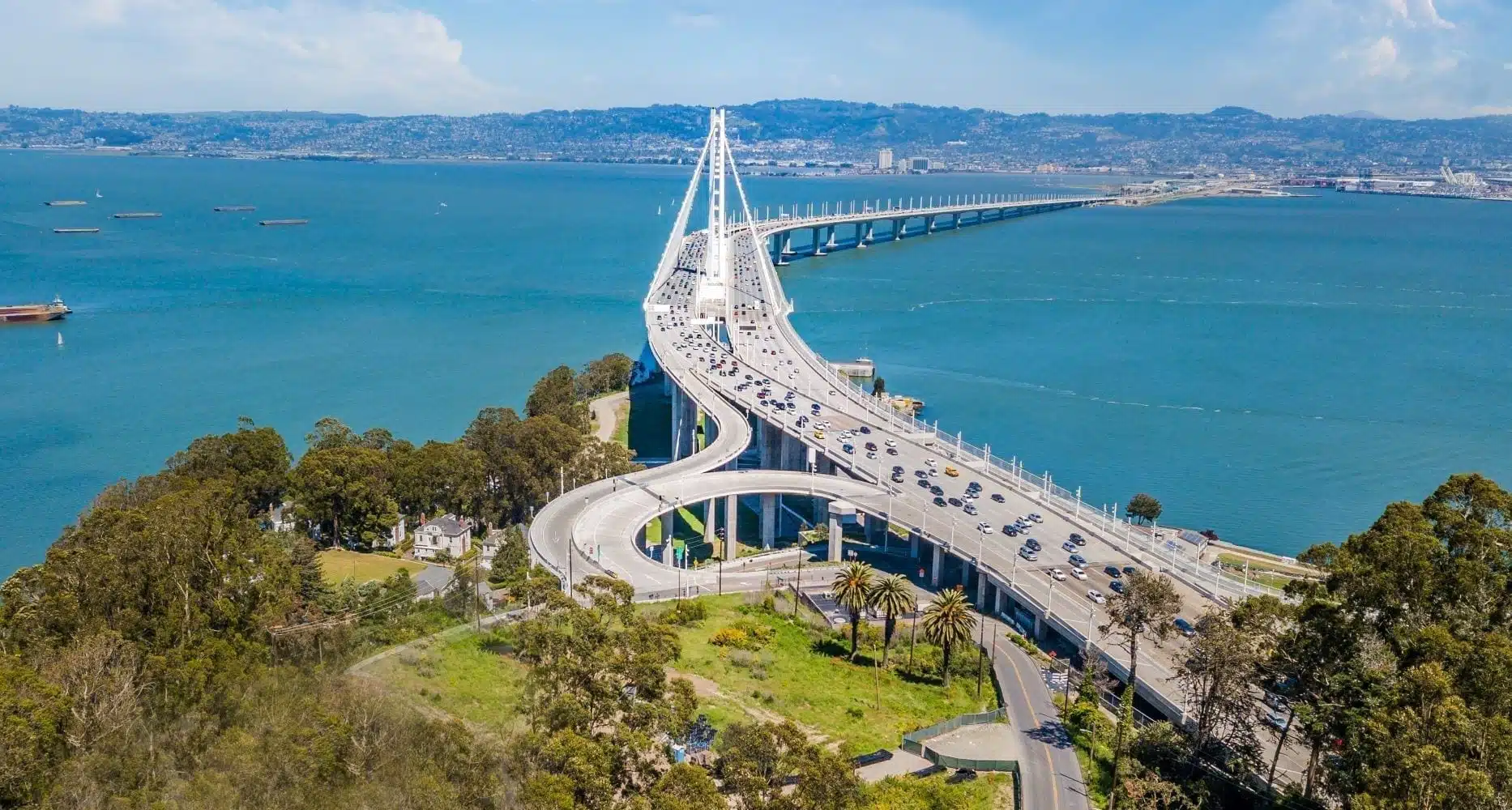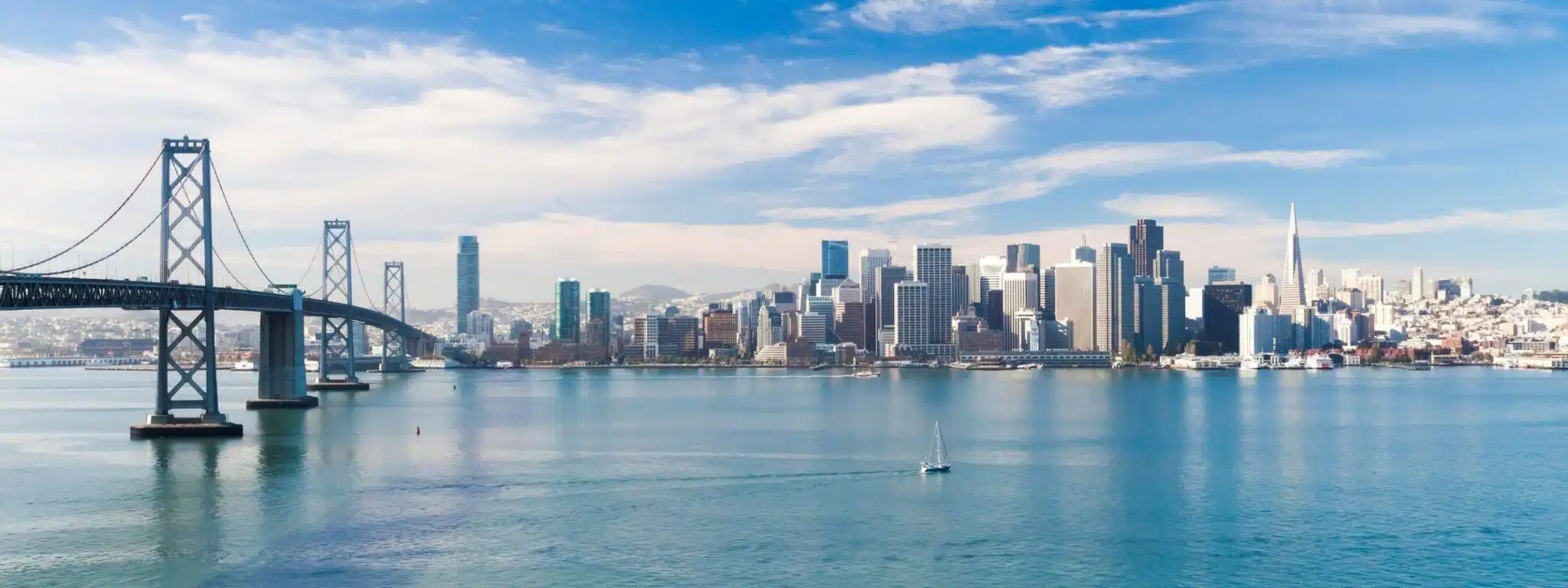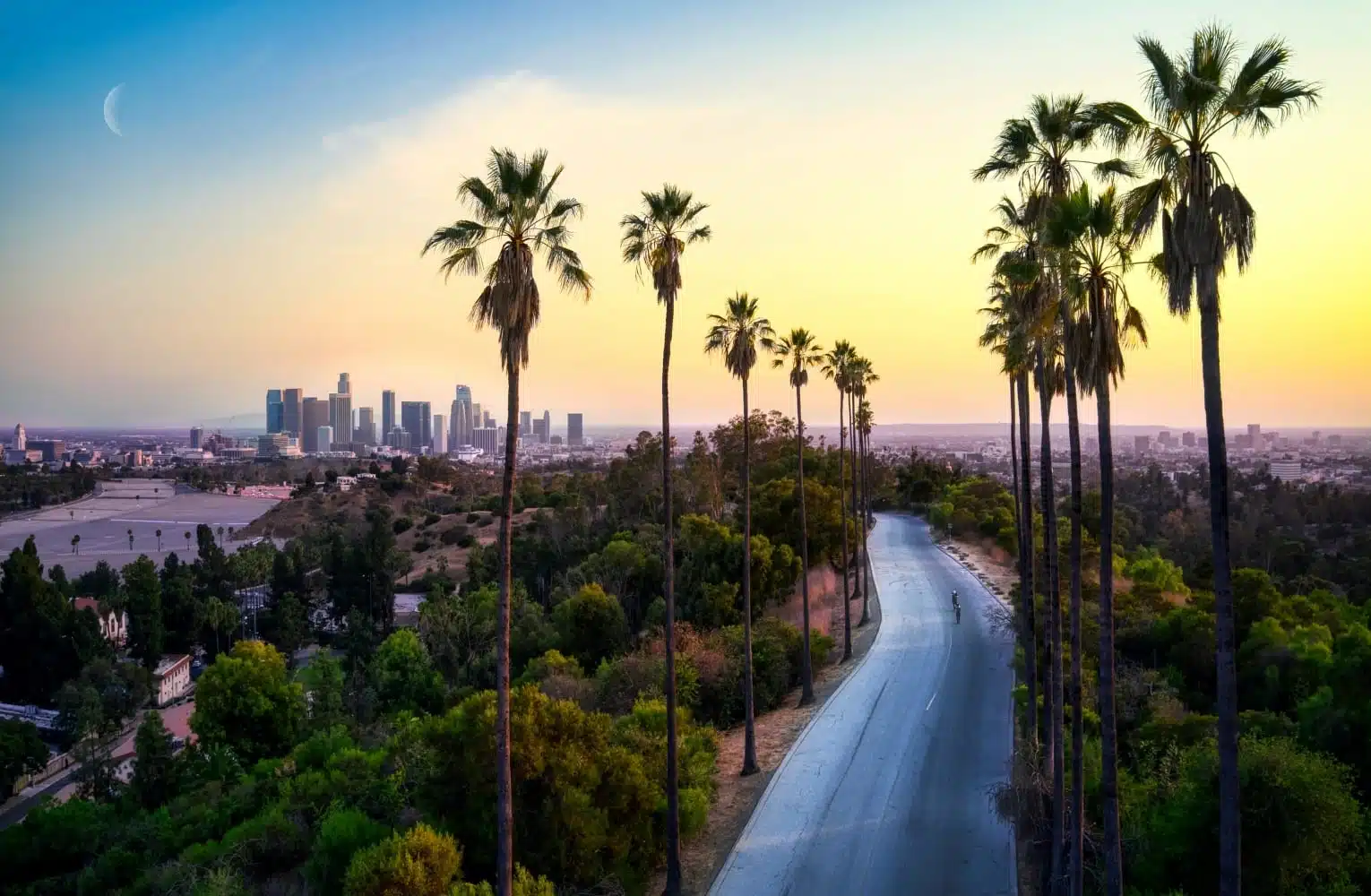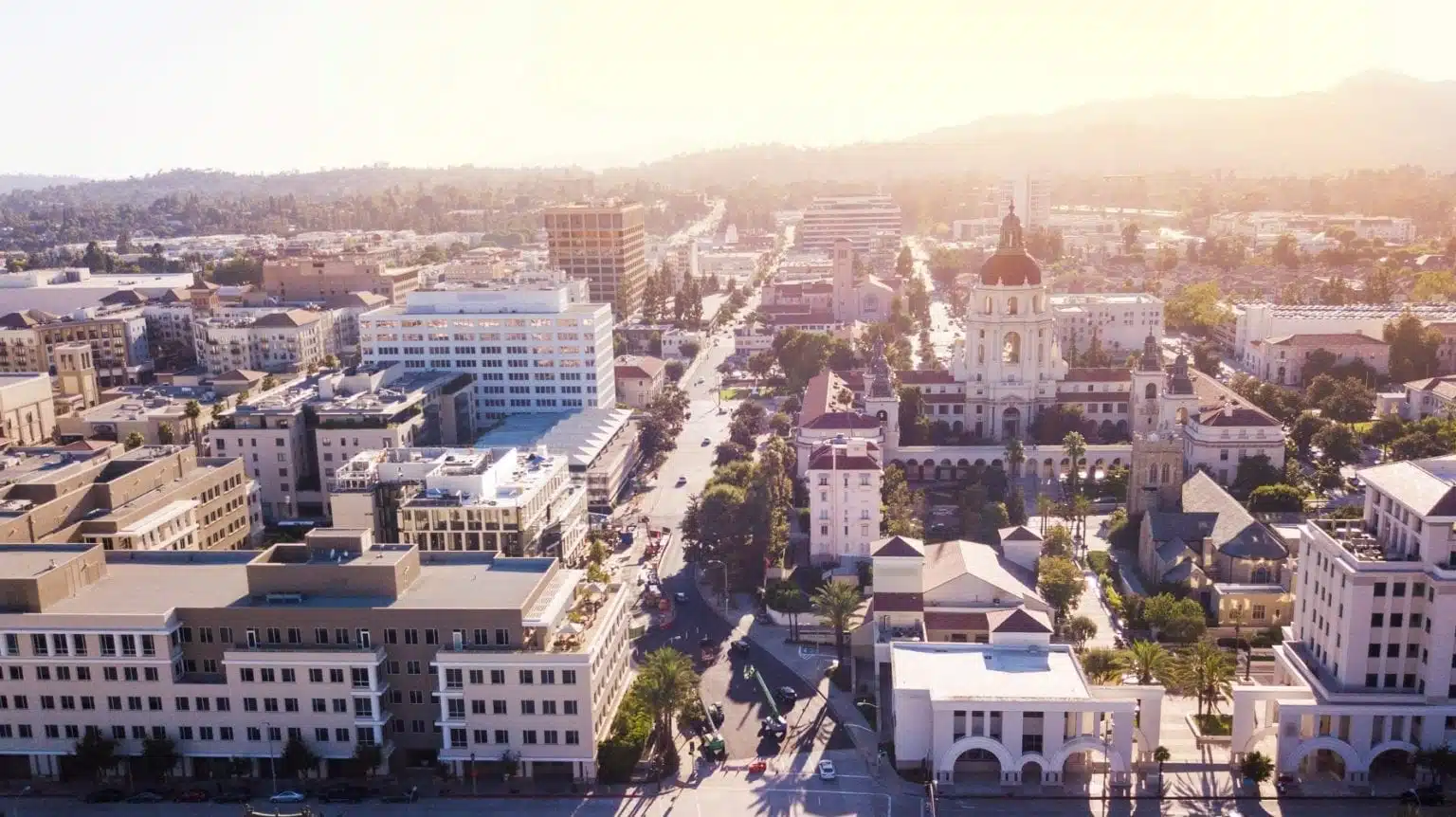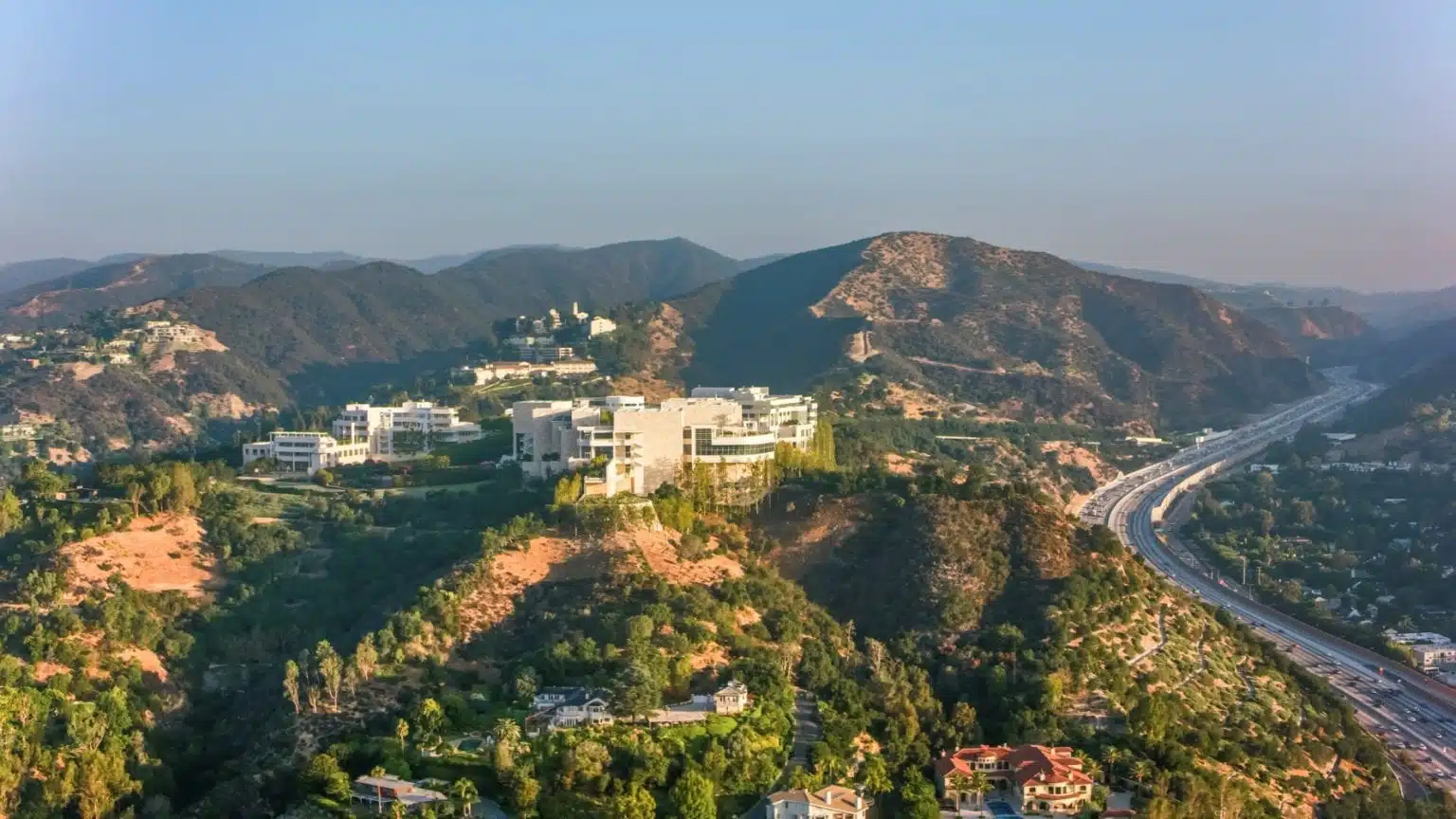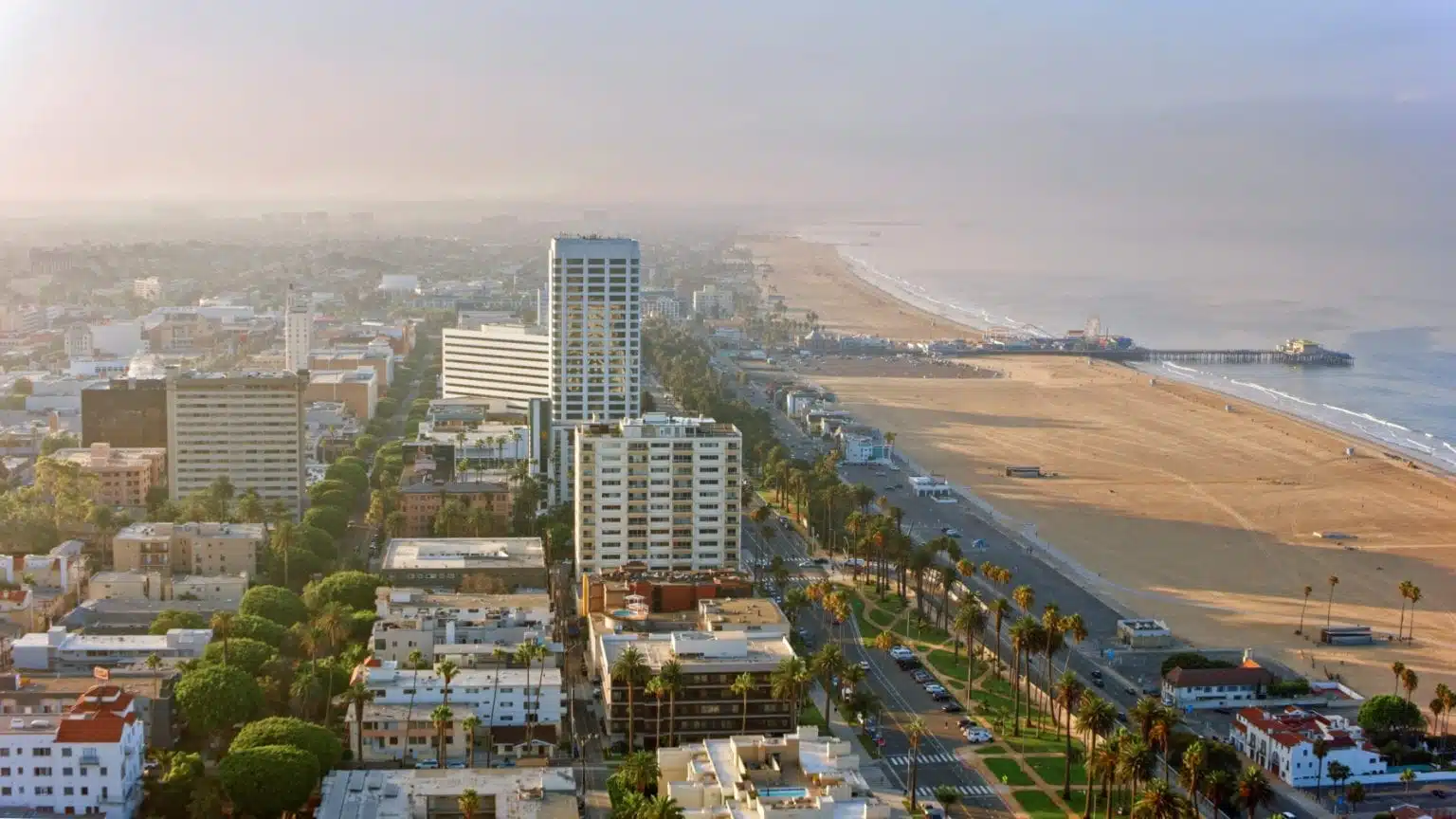Moving to California? 14 Things to Know Before You Arrive in the Golden State
California

California is well known as the land of sunshine, surfing, and movie stars. But that’s just skimming the surface of this huge and wondrous land. If you’re thinking of moving to California, you’ll want to dig a bit deeper.
We’ve compiled a list of 14 truly important things you should know before you head on over to the West Coast (A.K.A. the best coast).
Read on, future Californians, to learn more about the land, food, and people of the Golden State. At the end, we’ve even thrown in a few tips for making your move to California as smooth as possible.
| Planning a move to California? Start by getting a quote from PODS. |
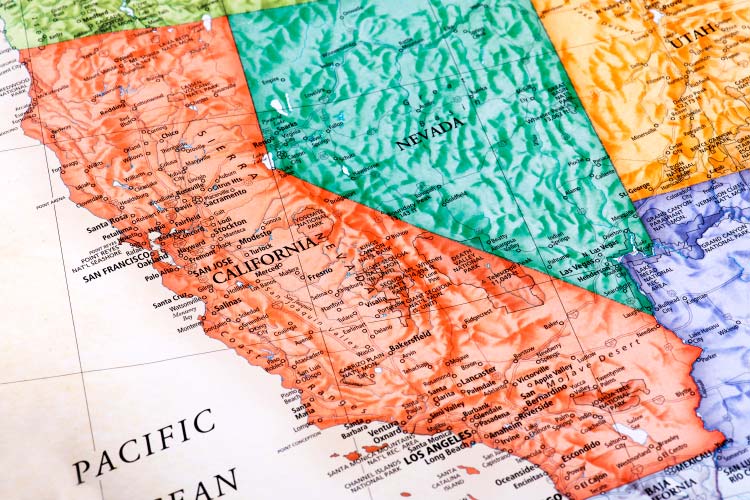
1. California Is Big and Spread Out.
No, California isn’t just one big beach. Nor is it a giant Redwood forest, a sprawling desert, or an enormous mountain range. But it does contain all of those things. Spanning 163,696 square miles, the Golden State is a patchwork of distinct geographies — each one with its own culture and climate.
Of course there’s Northern California (NorCal) and Southern California (SoCal). But within those broad regions, there are plenty of smaller areas, like the Bay Area, the Central Coast, the Central Valley, the North Coast, and the Inland Empire.
So if you want to move to California, the first thing you have to decide is which California? Do you want the hustle and diversity of Los Angeles? Or would you prefer the quiet serenity of Sonoma County (also known as Wine Country)? Perhaps you’re a military family relocating to San Diego. There are plenty of best places to move in California — you just need to decide what you’re looking for. Read on for more things to know before moving to California to help make that choice.
One thing’s sure to be true no matter which part of Cali you end up in: There will be great tacos.
Curious about what it costs to move to California? Jump to these sections for average moving costs on popular routes:
|

2. You Probably Need a Car.
Speaking of California’s grand size: You’re probably going to need your own set of wheels to get around. And in case you haven’t already heard of California traffic, let us warn you: It can get pretty bad.
In fact, California has more cars than any other part of the country. In 2021, there were over 14 million registered vehicles in the state.1 That’s almost twice as many as the next state in line, Florida. But there’s good reason for all these automobiles.
If you’re moving from the East Coast, where cities are densely populated and close together, then get ready for a new reality. Cities in California sprawl out for miles. The Los Angeles metro area alone is a whopping 4,850 square miles! That makes creating a subway system very hard, and walking across town could take days.
If you want to travel between cities in California, then you’ll definitely want a car. Getting from L.A. to San Francisco is a 380-mile drive, or about the same distance as New York City to Richmond, Virginia.
So unless you’re very dedicated to biking or using public transit (in which case, good for you), you’re going to want to include a reliable vehicle in your moving costs budget.

(Source: Visit California via Facebook)
3. There’s Tons of Economic Opportunity.
You may have heard that California’s economy is the largest in the country. But did you know that it’s also the fifth largest economy in the entire world, ranking above countries like India, the United Kingdom, and France?
Plenty of folks move to California for a specific job. But even if you’re coming in cold, you can get your foot in the door, whether you're a writer, a coder, an engineer, an entrepreneur, or pretty much anything else. The power of California’s economy is its versatility.
There’s a huge agricultural industry in the Central Valley, but the worldwide center of technological innovation is also just a few miles away in Silicon Valley. Hollywood is the center of entertainment production, but L.A. is also home to a booming service industry.
In short: California’s probably got whatever kind of work you’re looking for.
| Q: Is it a good idea to move to California in 2024? A: It’s a great time to move to California. Let’s get it out there: Climate disasters like wildfires and drought have taken a serious toll on the state recently, and the cost of living and tax rates are high compared to most other states. However, the average home value has actually seen a dip in the past year, salaries are high (the average salary is $61,597 according to ZipRecruiter, making it the state with the 9th highest salary average), and it claims nine national parks, meaning there’s always tons of timeless natural beauty to explore. |

(Source: Sharon McCutcheon via Unsplash)
4. The Cost of Living Can Be High.
The flip side of California’s stellar economy is that everything costs more. And we’re not just talking about a loaf of bread at the store. The state ranks second in the nation for the highest cost of living, just below Hawaii (and just above New York).
The average cost of a home in California is closer to a million than a half ($746,473 as of November 2023, to be exact). But most other things, from transportation to your utilities, will also cost you a pretty penny in the Golden State.
Of course, a lot depends on just where in Cali you settle. Fresno is significantly cheaper than, say, Berkeley. You can use Nerd Wallet’s cost of living calculator to help you find a California city that works for your budget.
You can also save some money upfront by cutting your moving costs. Renting a truck or using a moving container instead of full-service movers can save you thousands.
| Q: How much money do you need to live comfortably in California? A: A comfortable living wage in California depends a lot on where in the state you live and what kind of lifestyle you lead. In the state overall, the required annual income for a single adult with no kids before taxes is about $44,000, according to the MIT living wage calculator. If you’re living in San Francisco (one of the most expensive cities in the U.S.), though, that number goes up to nearly $55,400. |

5. California Is Diverse.
¿Hablas español? You might want to brush up on your Spanish before you head to California. More than 40 percent of the state’s population is of Hispanic or Latino origin, according to 2020 Census Bureau estimates (in fact, the state used to be part of Mexico).
You can see the Latino heritage in everything, from the language to the food to the architecture. But it’s not just the Latin American influence that makes the state great.
California is home to a huge Asian American population. There’s a bustling Chinatown in nearly every major city, where you can enjoy awesome food and shopping. Meanwhile, cities like Oakland are rich in African American history and culture.
All of this makes California the perfect destination for those who want to be closer to their own culture — or those who are fleeing more homogenous parts of the country in search of diversity.

(Source: Visit California via Facebook)
6. The Weather Is (Mostly) Great.
If you’re into rain, snow, sleet, and ice, then you may not want to move to California. Much of California tends to be sunny and dry. In L.A., it’s basically 71 degrees and partly cloudy 300 days of the year.
But, as we’ve said before, California is made up of a bunch of micro-regions. If you’re moving to Baker, CA, then you could end up seeing 120 degree days. Meanwhile, if you’re going to Truckee, you could see 14 feet of snow throughout the winter.
And then there’s the Bay Area, with the most inscrutable weather in the world. As the saying (often attributed to Mark Twain) goes: "The coldest winter I ever spent was a summer in San Francisco."
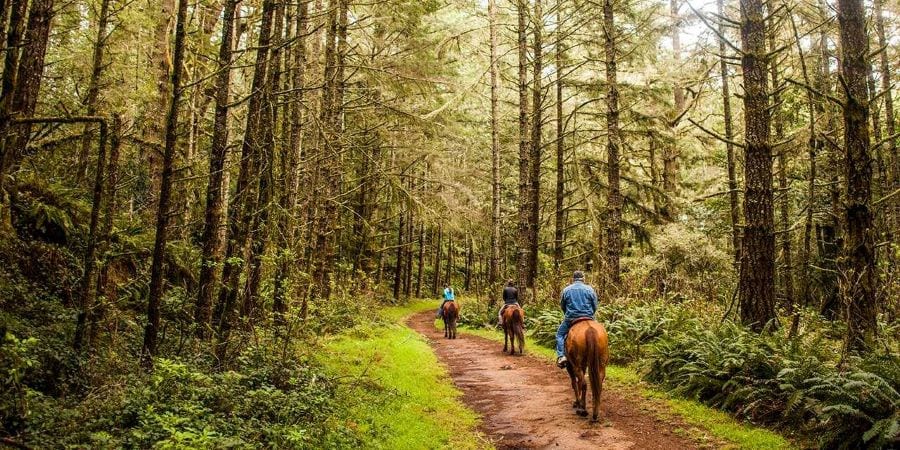
Catch a glimpse of the Pacific Ocean with a horseback riding tour from Five Brooks Ranch at Point Reyes National Seashore.
(Source: Visit California via Facebook)
7. The Outdoors Are Magnificent.
The cities of Cali are full of fun, opportunity, and lovely people, but it’s the great outdoors you’ll really fall in love with. Moving to California is ideal for anyone who likes to hike in the mountains, fish in alpine lakes, gaze upon wildflower super blooms, or surf gnarly waves.
California also has nine national parks. That’s more than any other state (sorry, Alaska)! Here’s the list in alphabetical order (we’re not choosing favorites here).
California National Parks:
- Channel Islands National Park
- Death Valley National Park
- Joshua Tree National Park
- Kings Canyon National Park
- Lassen Volcanic National Park
- Pinnacles National Park
- Redwood National Park
- Sequoia National Park
- Yosemite National Park
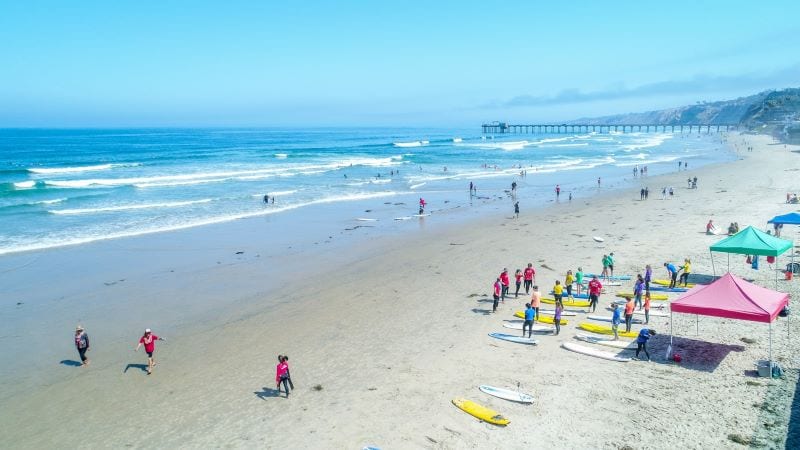
Try the Surf Diva Surf School in La Jolla outside San Diego.
(Source: Visit California via Facebook)
8. Did We Mention the Beach?
What can we say about the beach that everyone doesn’t already know? Sand, ocean, sun, a good book, and a cold drink — now that’s the life. Moving to California will get you close to 655 miles of beautiful coast for sunbathing, surfing, snorkeling, and enjoying a killer sunset.
Go ahead and jump right into that crisp water as soon as you’re done unloading your stuff. There’s no better way to usher in your new life on the Pacific coast. But if you’re moving to California from Florida or Texas, watch out, because the water can be quite chilly compared to the Gulf of Mexico — or even the Atlantic Ocean. For instance, it’s pretty common for surfers to wear wetsuits to stay warm.
9. California Has Great Educational Institutions.
Plenty of folks move to California specifically to attend the state’s amazing institutions of higher learning, like Stanford and USC. But even if you’re not moving there to go to college, you’ll still benefit from the state’s educational system.
The biggest player in California’s university ecosystem is, of course, The University of California. With 10 campuses and nearly 300,000 students, the UC system is about as big as it gets. It also has a reputation for outstanding education. In fact, 110 Nobel Prize winners have come out of UC Berkeley alone.
The UC universities have opportunities for all kinds of people, too, not just Nobel-worthy scientists. There are continuing education programs for working adults, summer programs for high schoolers, and open lectures and forums for all California residents.

(Source: Visit California via Facebook)
10. There’s Delicious Food (and Award-Winning Wine).
California is a paradise for foodies, health gurus, vegetarians, fast-food enthusiasts, midnight snackers, and everyone else who loves a good munch.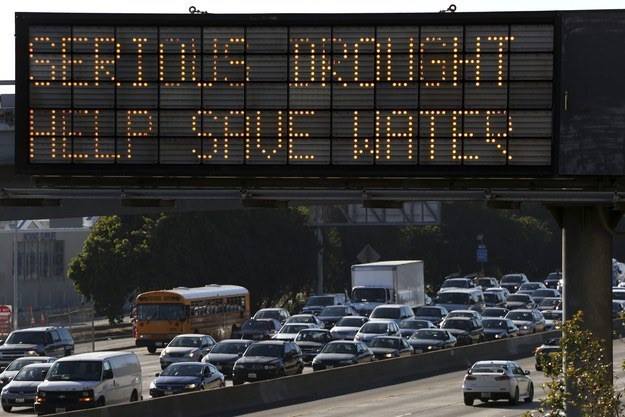
(Source: California Drought Facts via Facebook)
11. Moving to California Comes With a Few Risks.
If you’ve kept up with the news in the last few years, you’ve probably seen a story — or 20 — about California’s wildfires. And you might have heard about the drought, too. And the earthquakes. And the landslides . . .
Okay, so California has a few risks. But despite the outsized media attention these events often get, they’re actually quite rare. And even if one of these events does occur close to your new home, there are several things you can do to prepare and protect your home, yourself, and your family. At the end of the day, moving to California is like moving anywhere else: There can be risks, but a little preparedness goes a long way.

(Source: Cameron Venti via Unsplash)
12. It’s Easy To Be Green in California.
If you’ve ever driven to Southern California via I-15, then you’ve probably noticed the gigantic fields of solar panels near the border with Nevada. Those are just a few of the solar farms that, along with thousands of wind turbines, fuel California’s powerful renewable energy market.
Living in California, you’ll likely get your electricity, at least in part, from one of these renewable sources. The state also provides grants, tax incentives, and other forms of help for residents who want to install their own solar panels on their home.
But being green doesn’t just mean sourcing your energy from renewable sources. Californians tend to conserve their water, eat locally (it helps that so much food is produced in the state), and even tend their own backyard gardens.

13. State Taxes Are Not the Lowest.
Taxes may be inevitable, but how much you pay in taxes depends on where you live. If you’re moving to the great state of California, you may see an increase.
California’s state sales tax is among the highest in the nation, at 7.25 percent. Its income tax is also high, as is its tax on gasoline. But property taxes are actually quite low, which is good news for those who are looking to buy a house in California.
Californians may pay a decent amount in taxes, but they’re not in a rush to reduce them. In 2018, voters actually declined a ballot initiative to reduce the gas tax. Apparently Californians are willing to put their money where their mouth is when it comes to environmental protection efforts. In 2023, California also became one of six states to have a millionaire tax, so if you pull in a seven-figure salary, be aware you’ll need to pay a little more to live in the Golden State.

The boardwalk in Venice, CA
(Source: Sean Stratton via Unsplash)
14. You’re Not the Only One Moving There.
Ever since the gold rush in the mid-1800s, people have been flocking to California in search of a better life. Some want Hollywood fame, others want to start the next big tech company, and many just want to live in a beautiful place among laid-back California residents.
Yes, many people have been moving out of the state over the past decade due to the high cost of living, which was made even more possible by the pandemic and opening up of remote work. But plenty of people are moving back to California, too — many from Texas, actually.
This is good news for you if you’re moving to California. For one, it means you’ll have plenty of fellow migrants to reminisce with. You’ll also be in an environment where the locals are used to having newcomers arrive on the daily. It’s a state full of people who came from elsewhere. In other words: You’re not the only one moving to California.
Planning Your Move to California
We hope that these 14 facts about this big, beautiful state have helped you decide whether moving to California is right for you. If the answer to the question you’ve been pondering — “Should I move to California?” — is yes, then let us help you start planning your move. We’ll take a look at logistics, average moving costs, and what you can expect from the different moving options.
Full-Service Movers
Moving Containers
Moving container companies, like PODS, are like a more affordable hotel (to continue our analogy). You might not get all the bells and whistles included, like packing and loading, but you can get those services a la carte so you can get just what you need — which makes it a lot cheaper than staying at the 5-star hotel.
With PODS, a moving container will be delivered to your door. You then load it (or hire people to load it for you) at your own pace. The container is picked up and either put into storage or sent to your new destination, where you unload it. It requires a bit more work than with full-service movers, but it provides flexibility and can save you thousands.
Rental Truck
Rental trucks are more like going camping than staying in a hotel. You’ll have to do basically everything yourself, from loading your stuff to driving the big box truck. But it also tends to be the cheapest option for moving to California, although the cost gets a lot closer to using moving containers for long-distance moves.
Moving with a rental truck can be especially hard if you’ve got a lot of stuff or are moving into a dense city where driving is stressful.
California Moving Costs
Here are the average costs for several popular California moves from other cities in the West, Texas, Florida, and New York. The estimates here are for moving a 2- to 3-bedroom moderately furnished household, but it should help you get an idea of the ballpark figure, even if you’re moving more or less stuff.
Texas to California

Moving From Houston to California: Average Moving Costs*
Route: Houston to LA
- Full-Service Movers: $3,096-$7,015
- PODS: $2,450-$3,539
- Rental Truck: $1,035-$2,184
Route: Houston to San Francisco
- Full-Service Movers: $3,460-$7,569
- PODS: $3,331-$4,789
- Rental Truck: $1,258-$2,666
It’s nearly 2,000 miles from Houston to San Francisco and about 1,550 miles from Houston to Los Angeles, but the difference in lifestyles and living costs can make it seem like these cities are on separate planets. Starting with the cost of living, it’s 103 percent higher to live in San Francisco compared to Houston, while Los Angeles living costs are 65 percent higher than Houston. Culturally, California attitudes tend to be way more laid back than in Houston. That said, Texans should feel right at home with the strong Latino influence in California.
Las Vegas to Los Angeles

Moving From Las Vegas to Los Angeles: Average Moving Costs*
Route: Las Vegas to L.A
- Miles: 272
- Full-Service Movers: $1,603-$4,640
- PODS: $1,620 - $3,432
- Rental Truck: $324-$644
Being close to major movie studios costs a lot more than living in the gambling capital. The cost of living in L.A. is 49 percent higher than in Las Vegas, and housing is a whopping 117 percent more. Yet while both Las Vegas and Los Angeles are close to the mountains, in L.A., you've got the beaches and ocean, too. L.A. is the hands-down winner when it comes to a wider range of things to do. But if you're making the move, you probably know all that, and more.
Phoenix to Los Angeles

Moving From Phoenix to Los Angeles: Average Moving Costs*
- Miles: 374
- Full-Service Movers: $1,801-$4,950
- PODS: $1,620-$3,432
- Rental Truck: $380-$765
If you're moving from Phoenix to L.A., it's probably no surprise that you'll need a boatload more cash to maintain your standard of living — about 46 percent more, according to Nerd Wallet's Cost of Living Calculator. The housing will be an even bigger adjustment, at 98 percent higher in L.A. Still, in addition to the beaches, you'll appreciate milder summer weather in Los Angeles, plus a lot more grass and flowers. Los Angelinos also tend to be far more liberal culturally — perhaps even on the wild side — than Phoenicians. Yet there is so much diversity in L.A. that you're bound to find a place to feel at home no matter where you are on the cultural spectrum.
Florida to California

Moving From Florida to California: Average Moving Costs From Miami and Orlando*
Route: Miami to L.A.
- Full-Service Movers: $3,561-$7,169
- PODS: $3,613-$5,526
- Rental Truck: $1,705-$3,632
Route: Miami to San Francisco
- Full-Service Movers: $3,936-$7,902
- PODS: $3,856-$5,898
- Rental Truck: $1,858-$3,964
Route: Orlando to L.A.
- Full-Service Movers: $3,407-$7,0312
- PODS: $3,569-$5,156
- Rental Truck: $1,579-$3,361
Route: Orlando to San Francisco
- Full-Service Movers: $3,650-$7,327
- PODS: $4,628-$6,653
- Rental Truck: $1,747-$3,723
At more than 3,000 miles, moving from Miami to San Francisco is one of the longest hauls you can make while still remaining in the contiguous part of the U.S. Miami to Los Angeles is only a bit shorter, at 2,734 miles. Those moving from MIami to S.F. will feel quite a pinch in their wallets, with a 56 percent higher cost of living, while the difference from Miami to L.A. isn’t nearly as bad, at a 27 percent hike. Floridians will find plenty of sunshine in L.A., but a lot more smog, and in San Francisco, they’ll need to get used to a lot less sun and an abundance of fog. Both states tend to have relaxed attitudes, largely due to the weather. Florida flatlanders will love the mountains in California.
NYC to California

Moving From NYC to California: Average Moving Costs*
Route: NYC to L.A.
- Full-Service Movers:$3,614-$7,255
- PODS: $4,469-$6,456
- Rental Truck: $1,732-$3,692
Route: NYC to San Francisco
- Full-Service Movers:$3,793-$7,614
- PODS: $5,075-$7,296
- Rental Truck: $1,802-$3,844
*Based on estimates from PODS and MoveBuddha. Costs don’t include insurance or taxes. Prices will vary based on specific locations, dates, size of household to be moved, and available discounts. For a detailed quote on long-distance moves, call PODS at 877-350-7637.
How comfortable you are with the cost of living in L.A. and San Francisco depends on what part of NYC you come from. Manhattanites should find San Francisco more affordable, while those from Queens will find it more expensive. L.A. should be a better deal for New Yorkers, no matter what part of the city you come from. In terms of lifestyle, be prepared to shift way down from the Big Apple’s frenetic speed to California’s decidedly slower pace.
Well, that’s it. We hope this information about how to move to California and other moving to California tips have helped you get super stoked and super prepared for your big move!
Easton Smith works as a freelance writer and researcher, reviewing technology trends and the moving industry. He moved all around the continent, from New York to California, before landing back in his hometown of Salt Lake City.

